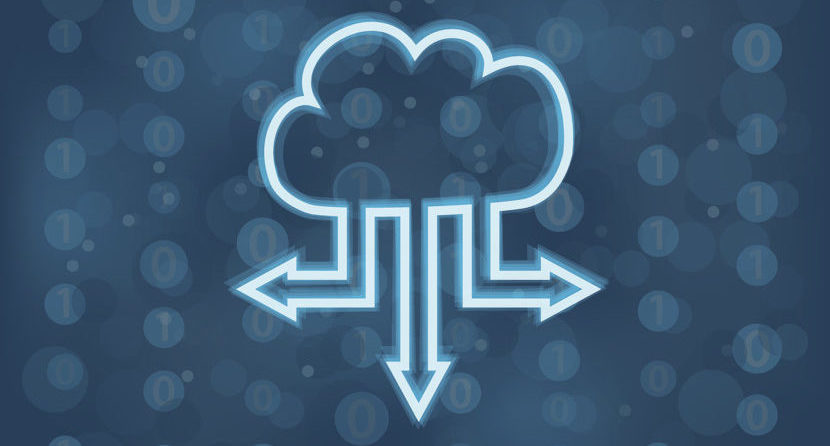
HITS Spring: Richey May Explores How to Help Vendors Safely Move to the Cloud
As a growing number of content makers and their vendors move to the cloud, it is in the best interest of Hollywood studios and other content companies to make sure their vendors’ move to the cloud is safe and effective, according to Alvin Tugume, cybersecurity engineer at Richey May.
“When we start talking about security, the reaction tends to be, “we just want to get the work done; we don’t care about this at all,” he said May 19 during the Cloud + Architecture panel breakout session “Moving Hollywood to the Cloud: A Packing List” at the Hollywood Innovation and Transformation Summit (HITS).
“I’d like to start off by saying that there is no cloud; it is just somebody else’s computer,” he said, noting the term “cloud is used to describe a global network of servers and these servers serve a different purpose, delivering computing services over the internet, which is the cloud.”
Therefore, “essentially the term cloud just basically means the internet,” he said, adding: “Whatever you tend to think about the cloud, you’ll want to think about the internet…. Now, being solely dependent upon the internet, it is important to have a solid foundation…. On-prem solutions have created that solid foundation to be able for us to enjoy what we’re enjoying right now, whether you are transitioning to the cloud or thinking about it, or you’re just like: “You know what? I’m not even going to do it. I’m just going to stick to the on-prem solutions. They’re working perfectly fine and I’m just going to stay there.’”
However, he said: “It is important to know that we have the solid foundation that we need, which [are] the on-prem solutions,” which he predicted are “not going to go away.” Instead, “they’re just going to be used as a leveraging tool or stepping stone to get to what we need to do in the cloud,” he explained.
He moved on to make note of the types of cloud there are. First, he noted, “we have the private cloud, which is a server that is a distributed network that is dedicated to one organization,” such as Microsoft Hyper-V, which he noted “enables you to run virtualized systems on physical hosts.”
 Then there is the public cloud, which he noted is a service by an external vendor that may include servers in one or multiple data centers. As examples, he pointed to Amazon Web Services (AWS) and Microsoft Azure. They still have an on-prem physical infrastructure but leverage that to give us cloud solutions and services, he said.
Then there is the public cloud, which he noted is a service by an external vendor that may include servers in one or multiple data centers. As examples, he pointed to Amazon Web Services (AWS) and Microsoft Azure. They still have an on-prem physical infrastructure but leverage that to give us cloud solutions and services, he said.
“Unlike private clouds, public clouds are shared with multiple organizations,” he said, noting “public clouds can be exposed to more internet traffic, which could then prevent risks in the environment.”
When an organization thinks about public cloud, it really wants to think about what type of data is in its public cloud because “this content has a higher risk or higher exposure to attackers,” he warned.
Moving on to discuss service models, he noted there are Software-as-a-Service (SaaS) that run completely in the cloud. For example, there is cloud-based Microsoft Office 365, he said.
There is also Platform-as-a-Service (PaaS), a cloud service that uses a set of tools and services “designed to make sure coding and deploying all these applications [is] quick and efficient,” he said. As an example, he pointed to AWS Elastic.
Then there is Infrastructure-as-a-Service (IAAS), which he noted is a cloud model offering virtualized computer services over the internet, such as Amazon AWS.
Benefits of utilizing the cloud in Hollywood include that it “accelerates digital transforming efforts,” he said. And, of course, “digital transformation is upon us and every industry and business is part of it today,” he noted, adding: “We saw a huge digital transformation when COVID hit” and everybody started working from home.
“The impact of technology is unprecedented in terms of things like unlimited compute power and unlimited storage,” he said, adding: “These are things that are becoming a reality in today’s age.”
Meanwhile, “when content is up in the cloud, it’s obviously more available on a wide scale because the content creators can be somewhere in a different country accessing with the right permissions, accessing the cloud to pull down content, to pull down data so that they can do the editing and proceed to next steps,” he said.
“You do not need to be worrying about high traffic, although this is still a thing,” he noted, adding: “There is still some level of concern about load balancing when it comes to the cloud. There are services that offer load balancing. You still initially need a firewall and … create a load balance so that you’re not over-powering a particular service that you’re utilizing in the cloud,” he explained.
And the “same security that we’ve seen implemented” in the past is the “same kind of mindset that we’re going to take into implementing … cloud solutions,” he added.
Another benefit of the cloud is the robust production it makes possible, he went on to say, noting it permits collaborative workflows from anywhere around the world in real-time. Another advantage to the cloud is that it eliminates the need to own hardware, he said.
Then, last but not least, comes the additional security components, including anti-malware protection and multi-factor authentication, he said.
To view the entire presentation, click here.
The Hollywood Innovation and Transformation Summit event was produced by MESA in association with the Hollywood IT Society (HITS), Media & Entertainment Data Center Alliance (MEDCA), presented by ICVR and sponsored by Genpact, MicroStrategy, Whip Media, Convergent Risks, Perforce, Richey May Technology Solutions, Signiant, Softtek, Bluescape, Databricks, KeyCode Media, Metal Toad, Shift, Zendesk, EIDR, Fortinet, Arch Platform Technologies and Amazon Studios.
